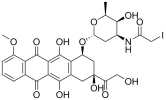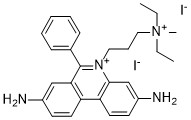Iodo PEG linkers, including Iodoacetamide PEG, enhance drug delivery and bioconjugation by using reactive iodo groups for targeted attachment of drugs and proteins. Iodoacetamide reacts quickly with cysteine, preventing disulfide bonds and stabilizing proteins. Compared to chloroacetamide, iodoacetamide offers faster and more efficient cysteine modification, making it ideal for time-sensitive applications. These linkers improve solubility, pharmacokinetics, and precision in drug delivery and diagnostics.
Iodo PEG
Iodo PEG Linkers: Powerful Tools for Drug Delivery and Bioconjugation
Overview:
Iodo PEG linkers, including Iodoacetamide PEG, are versatile compounds that enhance drug delivery and bioconjugation. Featuring a reactive iodo group, these linkers combine polyethylene glycol (PEG) chains with an iodoacetyl group for targeted reactions. They improve solubility, extend drug half-life, and allow precise targeting of molecules.
How Iodo PEG Linkers Work:
- Iodo Group Functionality: The iodo group facilitates critical chemical reactions, such as nucleophilic substitution, allowing drugs or proteins to attach to specific targets with precision.
- Cysteine-Iodoacetamide Reaction: These linkers modify cysteine residues by alkylating them. The iodoacetamide reaction with cysteine prevents disulfide bonds and enhances protein stability.
- Versatile Bioconjugation: Efficiently attaches drugs, peptides, and proteins for targeted applications.
- Protein Stability: The iodoacetamide reaction with cysteine boosts stability by preventing unwanted disulfide formation.
- Improved Solubility: PEG chains enhance solubility and pharmacokinetics, extending drug circulation time.
- Reactivity: Iodoacetamide is more reactive than chloroacetamide due to the higher leaving ability of iodine compared to chlorine. This makes iodoacetamide faster in alkylation reactions with cysteine residues.
- Selectivity: Both reagents alkylate cysteine residues, but iodoacetamide provides more rapid and efficient reactions, making it the preferred choice for sensitive applications that require faster reaction times.
- Application: While both are used for protein modification, iodoacetamide is often favored when time-sensitive reactions are needed. Chloroacetamide, being less reactive, can be useful in more controlled or gradual processes.
- Drug Delivery: Iodo PEG linkers enable precise delivery of therapeutic agents, minimizing side effects and enhancing efficacy.
- Protein/Peptide Conjugation: These linkers modify cysteine residues, stabilizing proteins and enhancing their use in research and therapeutics.
- Diagnostics and Imaging: Iodo PEG linkers improve diagnostic accuracy by attaching imaging agents to specific cells or tissues.
- Precision Targeting: The iodo group ensures selective attachment of drugs or proteins to their targets.
- Protein Stability: The cysteine-iodoacetamide reaction increases stability by preventing unwanted disulfide bond formation.
- Enhanced Pharmacokinetics: PEG chains improve solubility and extend the circulation time of drugs.















